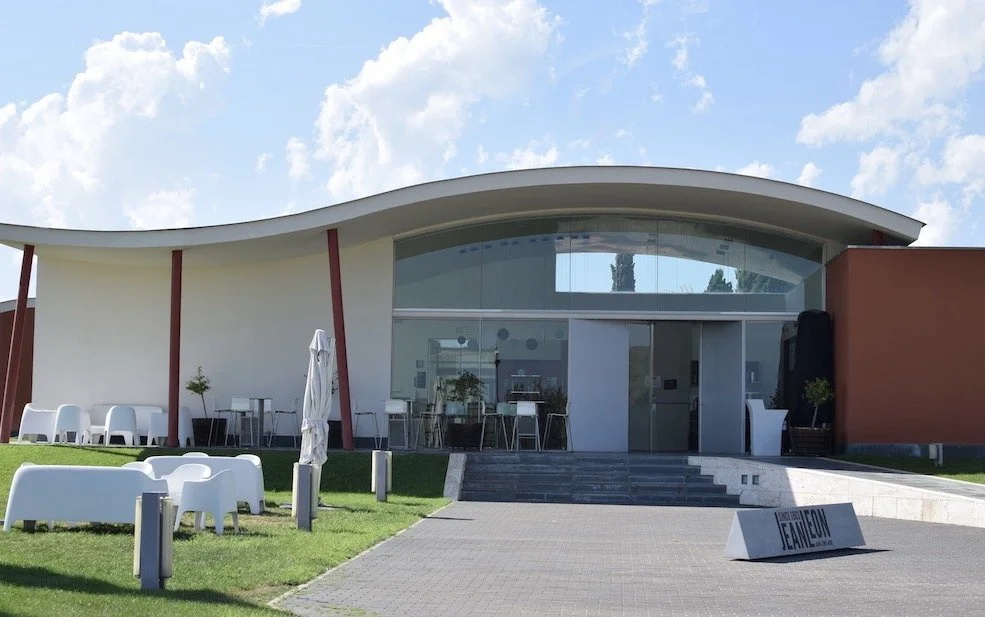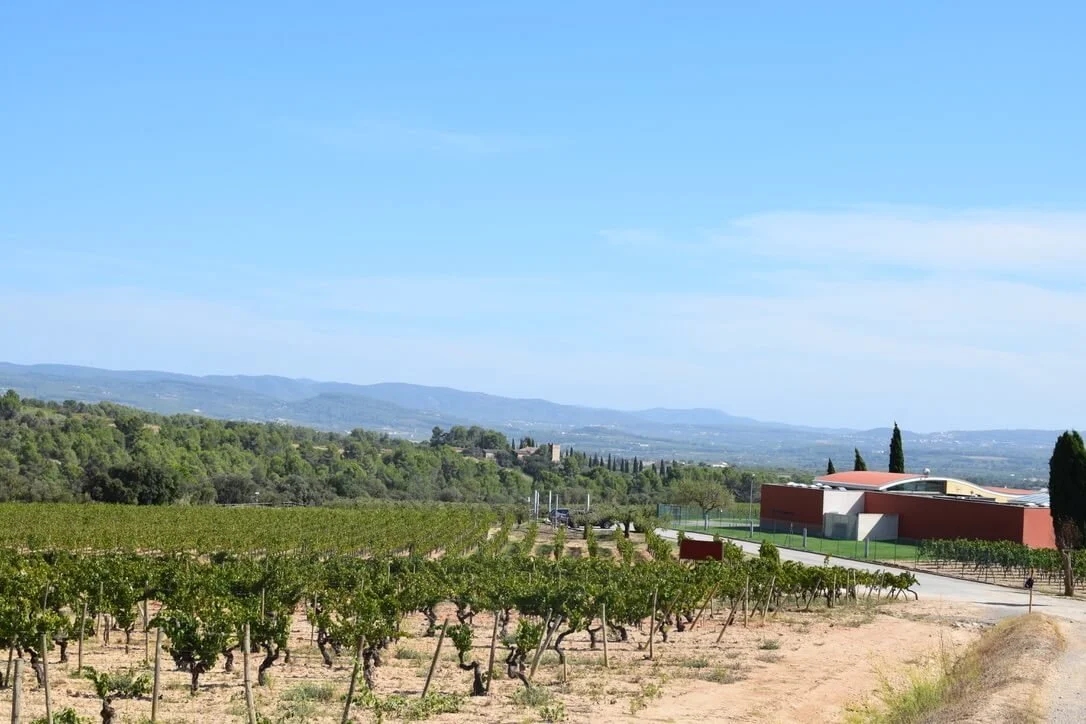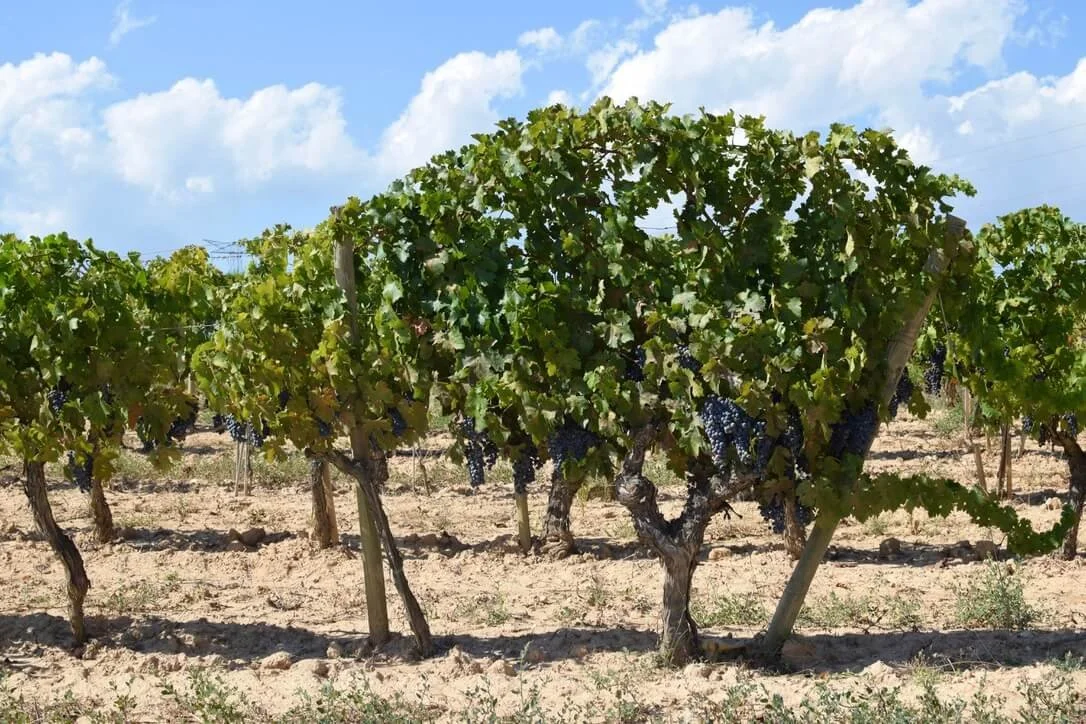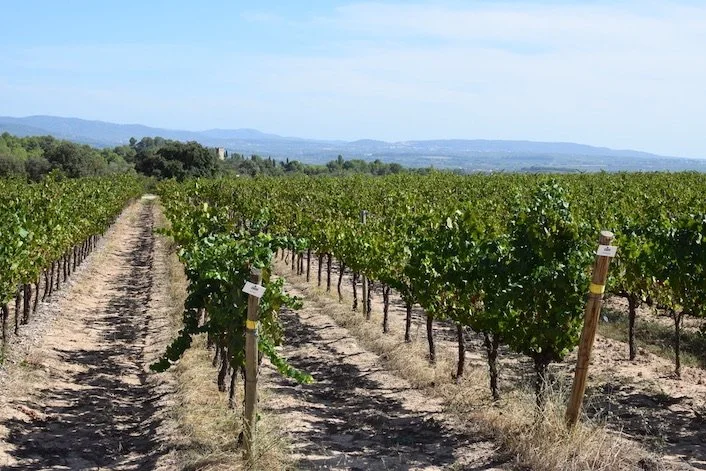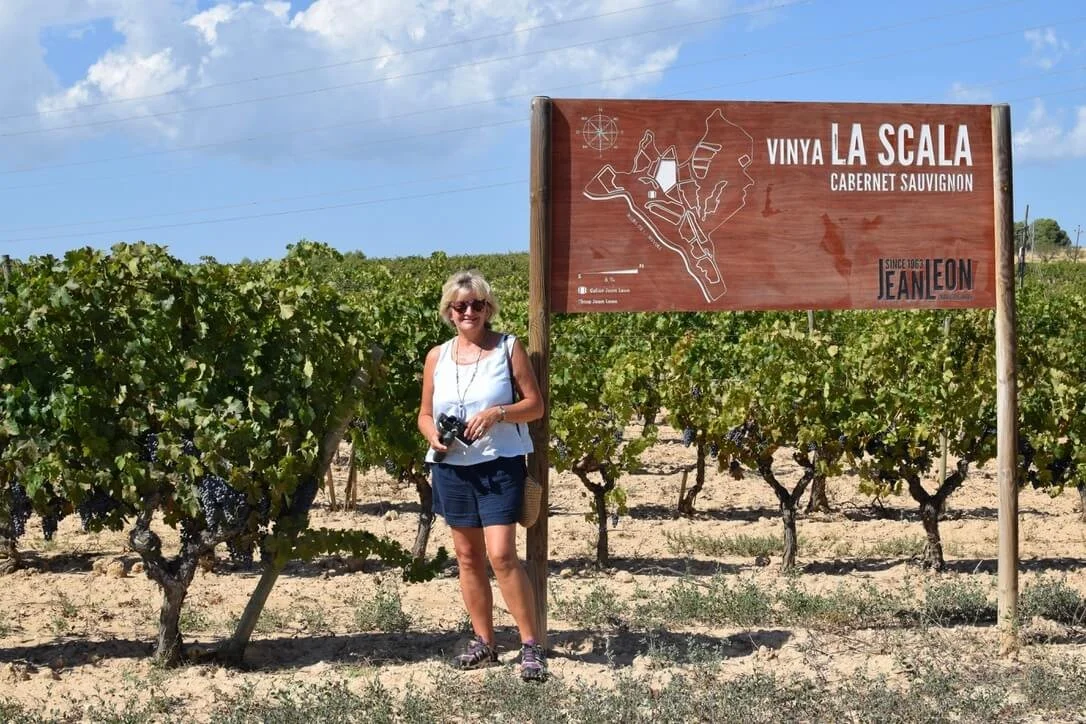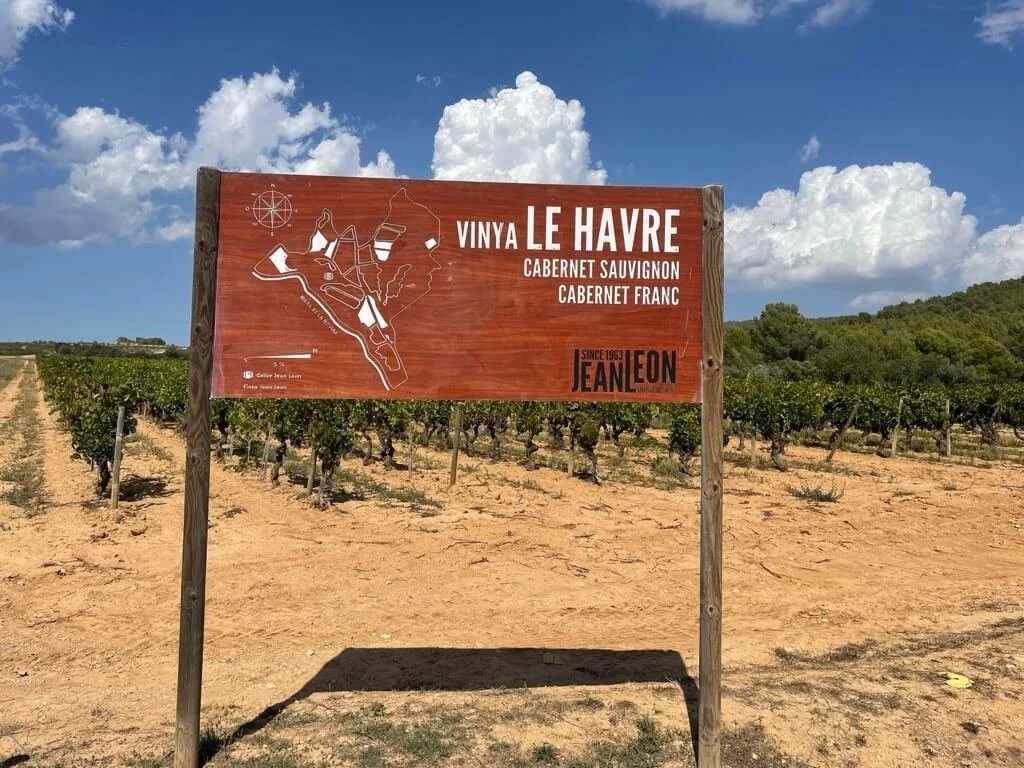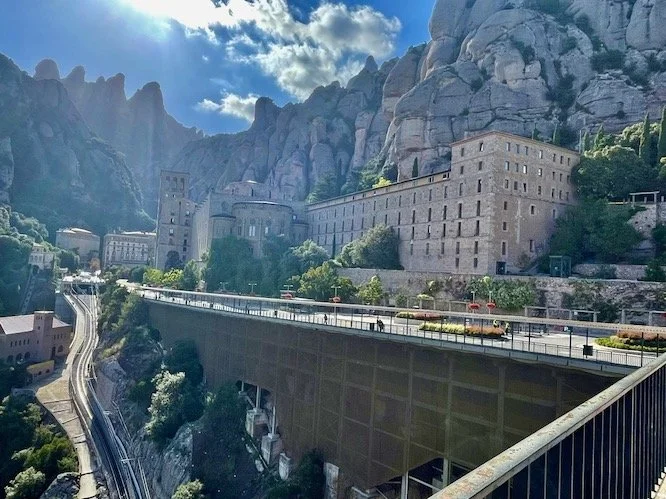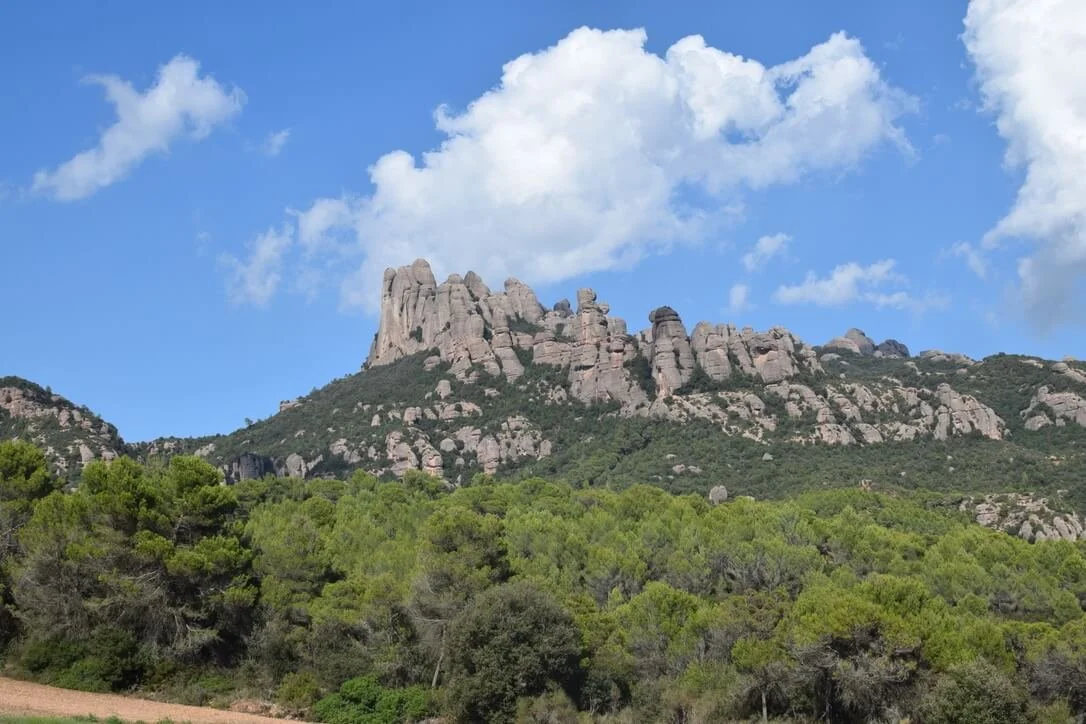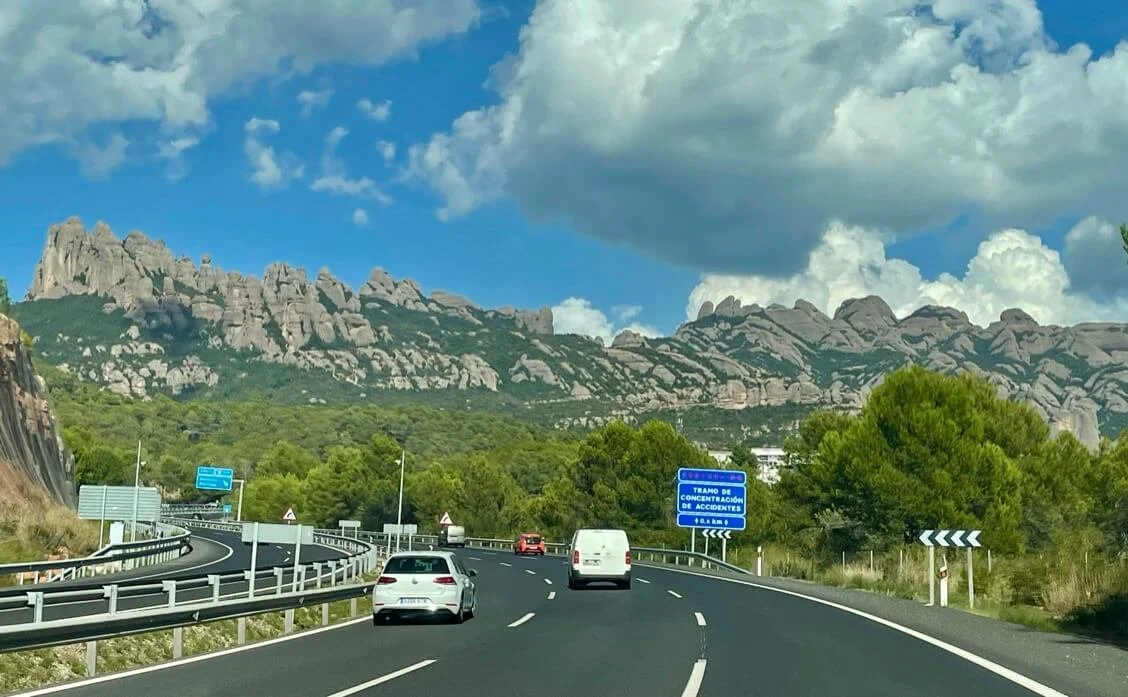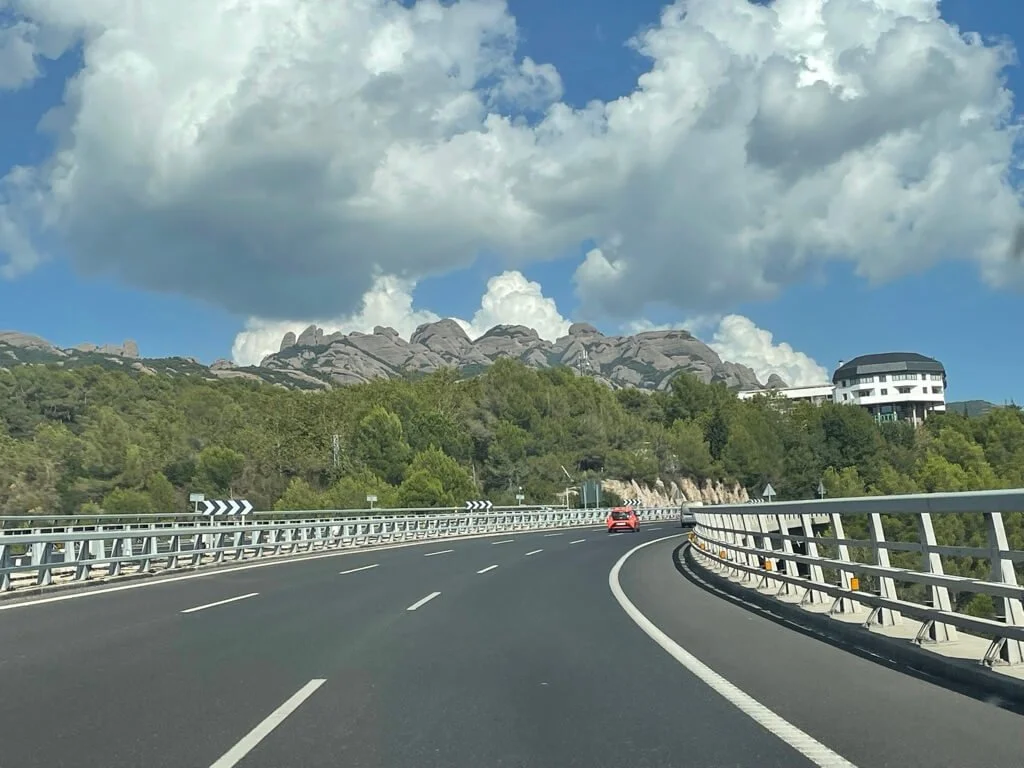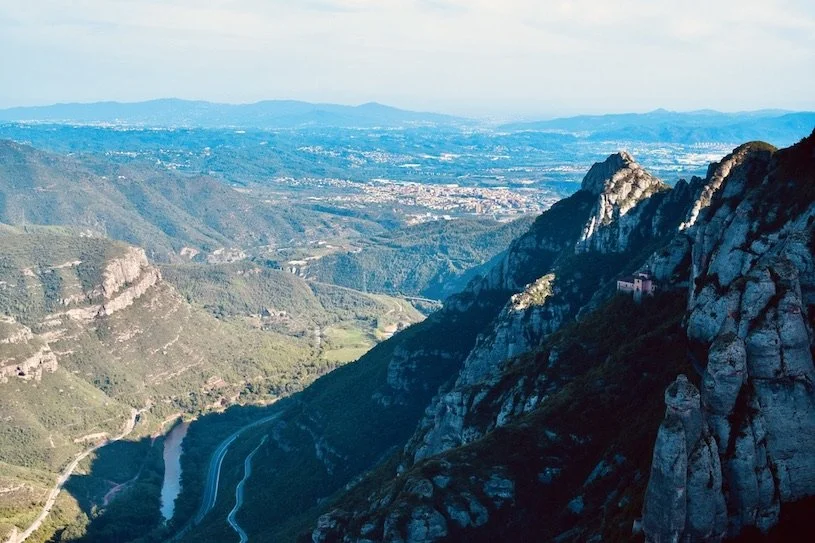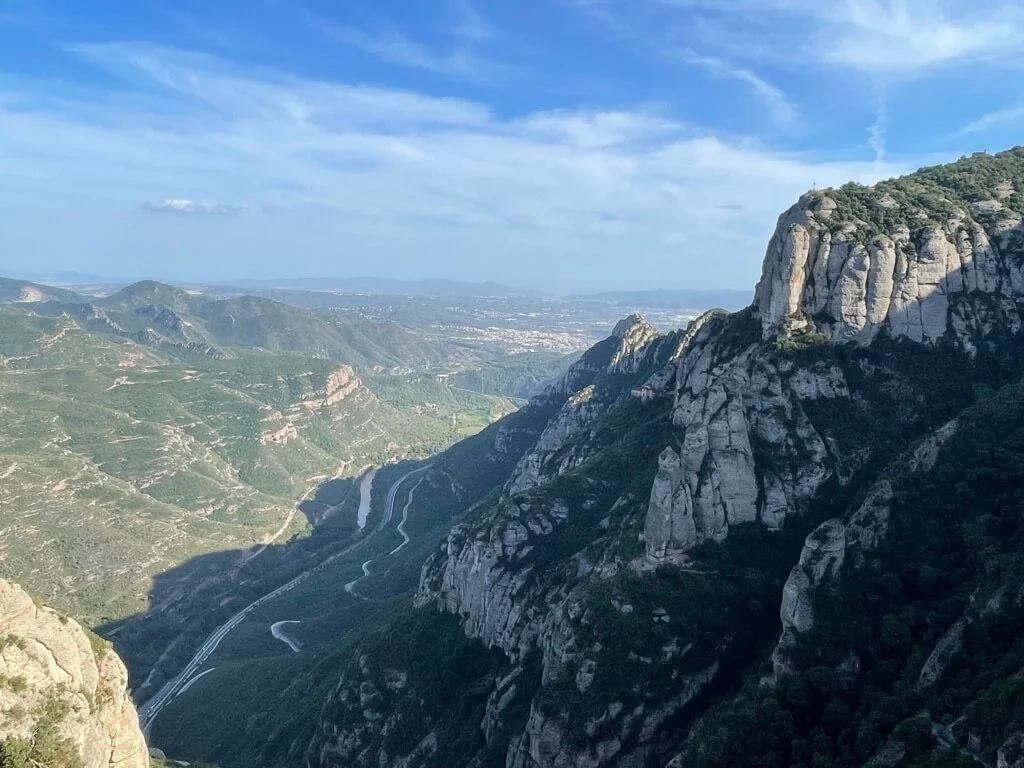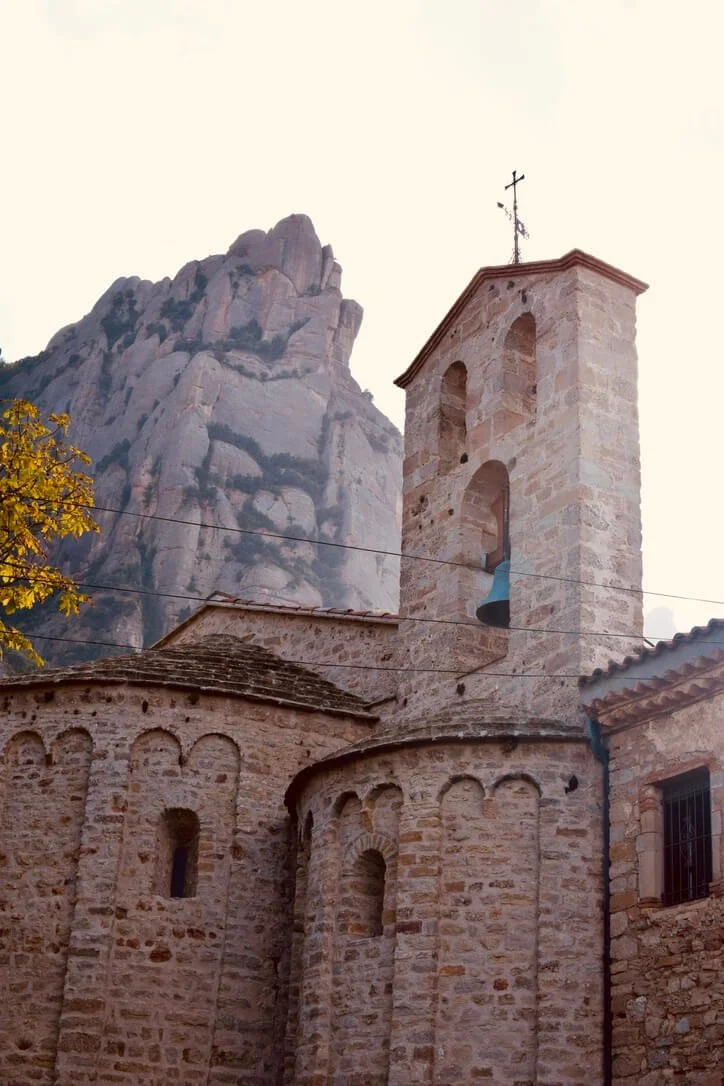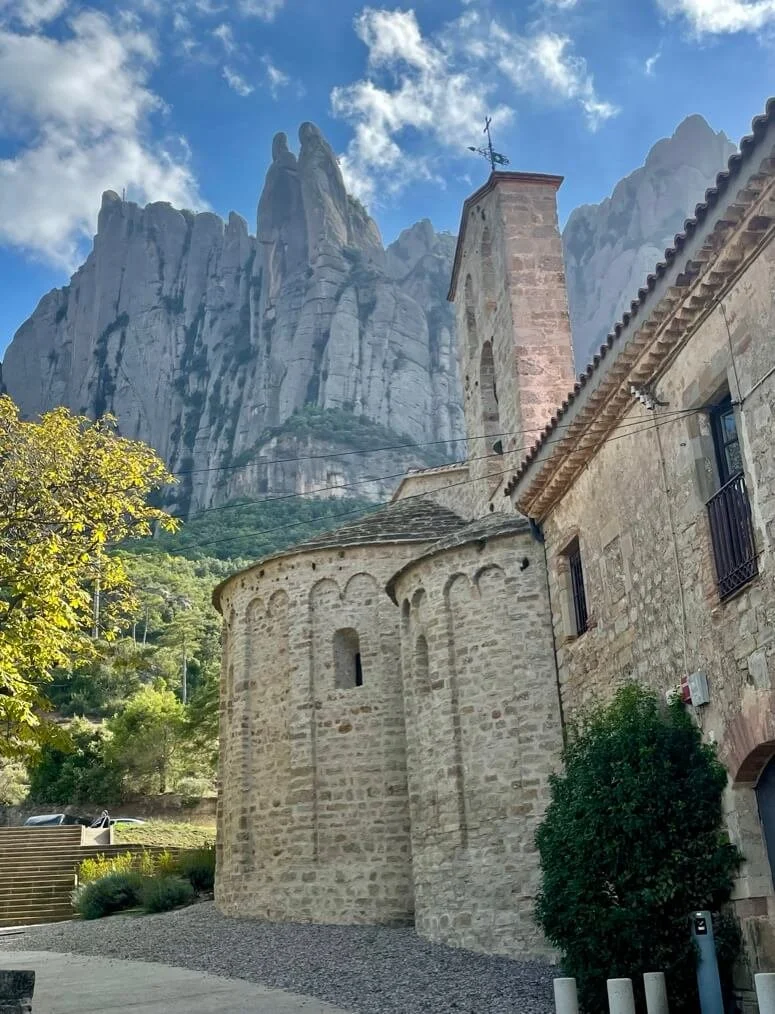Top Penedes wines and Montserrat day trip from Barcelona
Visit the iconic Jean Leon Wines in Penedès
Discover the fascinating story behind iconic Jean Leon Wines in the heart of the Penedès region and visit the famous Montserrat Monastery - all in a day trip from Barcelona
Whether you are spending a few days in Catalonia’s capital city, Barcelona, or perhaps on either of Spain’s beautiful Costa Brava or Costa Dorada coasts, we recommend you make time to venture just an hour inland to experience two of Catalonia’s - and indeed Spain’s - most iconic destinations.
Firstly, Jean Leon, not only responsible for producing some of the most respected Penedès wines today and for trailblazing wine production here in the 1960s and 70s, but a Hollywood legend. Secondly, the most spectacularly beautiful Montserrat Monastery, famous for its significant religious importance but also for its breathtaking scenery and surroundings.
Read on to discover more about both and how you could plan an amazing day trip in Spain’s stunning Catalonia region!
Also see the video here:
Catalonia’s Penedès region
Today, Penedès is one of the most famous Spanish wine producing regions, primarily because it happens to be where 95% of the famous Spanish sparkling wine, Cava, is produced. (See our blog about visiting the Cava region).
The Penedès vineyards are located just 30 minutes west of Barcelona in north-eastern Spain, in the Spanish region of Cataluña - or in English - Catalonia. Other significant Catalonia wine regions include Priorat and Monsant.
To learn more about Catalonia and its wines see here.
Penedès vineyards, Catalonia - Source: Winekeller
The Penedès DO (Designation of Origin)
The Penedès wine region was established in 1960 and can be divided into three sub zones:
Upper Penedes - the inner area of the region - low production but excellent quality fruits
Middle Penedes - the southeast and the area with the greatest production
Lower Penedes - closer to the Mediterranean
The climate here is typically Mediterranean, mild and warm and the vineyards are protected during the harsher winters by the rocky Montserrat mountain to the north (see later). The warmer winds however, like the Mistral or other winds from the west, do reach the vines, which has a very positive impact on the health of the fruit.
Most of the Cava vineyards are located around the town of San Sadurní d’Anoia, which has earned the title of ‘Cava capital’ and Cava is the main reason the Penedès DO is known for its white grape varieties, rather than red.
Today Penedès vineyards have approximately 10% red grape vines and 90% white grape vines, however, before the phylloxera plague of the 19th century, most of the Penedès vineyards were planted with red grape varieties.
Penedès wines
The Penedès DO is known for its excellent, fresh, fruity, aromatic white wines, with a moderate alcohol content. Reds are soft, with character and a velvety texture. Penedès wines are produced using traditional grape varieties, but also international grape varieties, for which Jean Leon and Catalan wine giant Torres were responsible for introducing into the region in the 1960s and 70s (see later).
Penedès white grape varieties:
The Macabeo grape variety
The main white grape varieties used in Penedès wines include Macabeo, Parellada, and Xarel-lo (these are the main grapes used in Cava blends). Chardonnay also features and is used in sparkling wine/Cava blends and for still wines.
Penedès red grape varieties:
For red wine the main grape varieties include: Garnacha tinta (red Grenache), Cariñena, Tempranillo, Monastrell and Samsó, but also Cabernet sauvignon, Cabernet franc and Merlot.
In the 1980s, Penedès was considered one of the most dynamic, varied wine regions in Spain. This still holds true and the wines today are also considered some of the best the country has to offer!
Visit to Jean Leon in Penedès
Jean Leon is one of the most well-known ‘non-Cava’ wine producers in Penedès today. We were attracted to visiting Jean Leon because we had heard that they produced excellent ‘international grape variety’ wines here and they were organic. What we weren't aware of, before our visit, was the incredible story behind Jean Leon…
Jean leon - A Man - A Time - A Wine
The captivating story behind ‘Jean Leon - A Man - A Time - A Wine’, is told exceptionally well in this short video. His story is one of passion, hard work, good fortune and following your dreams and your convictions - also made so captivating by a bit of Hollywood glamour!
There is also a detailed timeline of Jean Leon’s incredible life on the Jean Leon website.
In brief…
Jean Leon, born Ceferino Carrión, was born in Santander, Spain. His family moved to Barcelona after a terrible fire burned their house down and soon after he moved onto Paris in search of a new life and adventure, from where he travelled to New York as a stowaway on a ship (on the 8th attempt).
The incredible story of Jean Leon and his position at the heart of Hollywood royalty
Here he changed his name to Jean Leon and held several jobs, including a cab driver, a bus boy and a waiter. He soon moved onto Hollywood and got a job in the Villa Capri restaurant, owned by Frank Sinatra and Joe DiMaggio. He began to move in Hollywood royalty circles, including James Dean, with whom he went on to open what became the legendary restaurant of the 1950s and 1960s, ‘La Scala’ in Beverly hills - still famous today. Here he mixed with names such as J. F. Kennedy, Marilyn Monroe, Grace Kelly and Robert Wagner and lived at the centre of an incredible time in American history.
He presided over an exceptionally impressive wine collection at La Scala, but his ambition was to create his own wine, in the style of the finest Bordeaux. So in 1962 he purchased 150 hectares of the best land in Penedès, Catalonia, Spain to fulfil his dream. He dug up the existing local vines and against the views of the locals, he went on to plant Chardonnay, Cabernet Sauvignon and Cabernet franc vines, all grafted from the best French vineyards.
This resulted in the first Cabernet Sauvignon and Chardonnay wines to ever be created in Spain. The grapes flourished in the special climate here and the sand/clay soils and Jean Leon wines achieved fame and recognition throughout Spain and the world over. The pinnacle of his success came in 1981 when his flagship and iconic ‘La Scala’ Cabernet sauvignon wine was selected as a wine to be served at Ronald Reagan’s inauguration celebration.
Sadly, Jean Leon was diagnosed with cancer in 1994 and decided to entrust his legacy to the Torres family, who own and manage the estate today. Jean Leon passed away in 1996.
The Jean Leon estate today
Jean Leon’s vision lives on today and his legacy prevails, under the stewardship of the Torres family.
There are 63 hectares of vineyards, just over half of which are classified as being prized ‘single vineyard’ sites for the top estate wines - see later. Some of the vineyards are labelled ‘project’ vineyards, where new wines of tomorrow are being cultivated.
Organic practices were introduced across all of the vineyards in 2008 and Jean Leon achieved organic certification for the 2012 vintage. There is no large-scale production at Jean Leon, only limited selection, in order to create the highest possible quality wines. The winery is on the same estate as the visitor centre, in the middle of the vineyards.
Jean Leon wines
Jean Leon’s story can be lived through his wines today.
There are 4 ‘single vineyard’ - or ‘Vi de Finca’ in Catalan - wines. It is exceptionally difficult to achieve this certification in Spain. These wines represent the culmination of Jean Leon’s vision to create the finest, aged Bordeaux-style wines.
Vinya Le Havre - Cabernet sauvignon Reserva
Made with Cabernet sauvignon and a small amount of Cabernet franc grapes grown in 16 hectares of vineyards with the same name. Le Havre is the port from which Jean Leon left as a stow-away for New York
Vinya Palau - Merlot
Made from grapes planted in 10 hectares of vineyards, this wine is a tribute to his place of birth, Santander
Vinya Gigi - Chardonnay
Jean Leon was a pioneer in Chardonnay and barrel fermentation. This wine originates in a small, exceptional 5-hectare vineyard planted in 1967. Jean Leon named the vineyard and the wine it produces, after his daughter
Vinya La Scala - Cabernet Sauvignon Gran Reserva
The flagship Jean Leon la Scala wine and named after his famous and celebrated restaurant in Beverly Hills. The grapes come from a small 8 hectare parcel planted by Jean Leon in 1963.
Jean Leon 3055
A second brand of Jean Leon wines is called ‘3055’ - a more youthful, fresh range of wines and a tribute to Jean Leon’s early life. 3055 was Jean Leon’s taxi licence number when he worked as a New York cab driver.
The 3055 range includes a Chardonnay, a rosé and a red wine which is made from a mixture of Merlot, Petit Verdot and Cabernet Sauvignon grapes.
Jean Leon Xarel-lo
Then there is a fairly new wine, the first vintage being 2020, called Jean Leon Xarel-lo. This is the first Jean Leon wine to be made from local indigenous grapes and is homage to Jean Leon and the special land here in Penedès he chose to be the home for his dream wines. Xarel-lo is a popular Penedès white grape variety.
Jean Leon and art
As with many wineries, art and wine come together at Jean Leon. The label for each new Jean Leon vintage is produced by a different artist, creating something even more special, desirable and covetable. The packaging for the wines is also quite special and unique. At Jean Leon, underpinned by the high quality of the product and the unique story behind the label, a very special brand has been created.
Our wine tasting
We enjoyed a private wine tasting at Jean Leon, which included the 2019 ‘Gigi’ Chardonnay and the 2015 ‘La Scala’ Cabernet sauvignon Gran Reserva. They were both superb wines and we can’t rate them highly enough. Having heard the incredible story behind Jean Leon made tasting these wines extra special.
Wine tourism at Jean Leon
Jean Leon offers lots of different ‘wine experiences’ at the visitor centre. A tour here involves a tour of the vineyards, the cellars and the museum, along with a tasting of several wines. You can also choose to enjoy a food and wine pairing, or explore the vineyards by e-bike or segway, or you can just enjoy a drink in the wine bar and experience first-hand the magic of the special story behind these special wines.
Whatever you choose to do, you need to book in advance, especially for non-Spanish or Catalan language tours.
Visiting John Leon
John Leon is located 10 minutes away from the Penedès Cava capital of Sant Sadurni d’Anoia, about a 45 minutes drive from Barcelona.
Address: Jean Leon, Chateau Leon s/n, 08775 Torrelavit (Barcelona).
Conclusion and personal highlights
We would really recommend you visit Jean Leon whilst in Penedès. It’s a very special place. No it’s not a typical Spanish winery producing typical Spanish wines, but it is unique and the wines are superb. The grapes may be mainly international, but Jean Leon selected this location rather than anywhere else in the world, because of the terroir - the climate and the soils. This is a real success story - Jean Leon achieved something that nobody thought was possible, to produce a top-class Bordeaux-style wine, in Penedès in Spain.
We loved visiting Jean Leon - it was like stepping back into a piece of history. The visitor centre is excellent and we would highly recommend!
We loved our visit to Jean Leon!
Montserrat Monastery Spain
A Montserrat day trip from Barcelona is for many, a highlight of a visit to Catalonia. It offers an excellent way to experience Catalonia's culture and heritage, especially when it includes visiting its holiest site, the 16th-century Benedictine monastery of Santa María de Montserrat.
This historic Monastery site, once the place of a religious sighting, has come to symbolise one of the most important sites for religious pilgrimage in the world. With over two million visitors each year, Montserrat caters well to the needs of large groups of tourists. There’s lots to see and do here, so allow plenty of time, not just to explore the various monastery buildings, but to enjoy the beautiful surroundings and scenery.
Montserrat mountain
When driving to Montserrat Monastery, the first thing you notice is the incredible mountain and rock formation which looms ahead of you. Both the Montserrat mountain and its Monastery have always been an important symbol of Catalonia’s history, spiritual beliefs and culture.
The Monastery sits at the very heart of the Montserrat mountain, some 1,266 metres high, so it’s quite a long, winding drive up to the Monastery itself, but very much worth it!
The mountain, the scene of numerous legends, is an immense mass of rock which stands out against the sky with a series of unusually-shaped peaks. From the Monastery itself you can experience magnificent views over Catalonia and of some of the most unusual rock formations in the whole of the region.
Hiking at Montserrat
The Monastery's unique location ensures that it is an ideal location for nature lovers and hikers. There are many walks from the Monastery and hiking in Montserrat is incredibly popular.
You can take a funicular to the top of the mountain, and from there you can choose a number of different walks, all with amazing views of the Catalonian countryside.
About Montserrat Monastery
Montserrat Monastery is famous for its image of the Virgin Mary known as the Mare de Déu de Montserrat, which was proclaimed the patron saint of Catalonia in 1881. The Benedictine Monastery was founded here originally in the 11th century and the current Renaissance building dates back to the 16th century, but it was extensively rebuilt in the 20th century. Today you can visit the Monastery and the Basilica, where above the altar you can see an impressive statue of the ‘Virgin of Montserrat’, also known as the Black Madonna (due to the smoke from the candles).
The monastery has traditionally been a centre for knowledge and today is home to a monastic community of about 80 monks. In the interior of the Monastery there is an outstanding library with a collection of over 250,000 volumes.
Montserrat is famous for its religious image of the ‘Virgin Mary’, but many also visit to hear the famous ‘Escolania’. One of the oldest boys’ choirs in Europe and mentioned in documents dating from the 14th century, this is a choir of boys aged between 10 and 14 who can be heard in various religious services and who you can hear singing each day at 13.00 in the Basilica. Montserrat music is popular throughout the World and the Monastery choir boys have now recorded over 100 albums of choral music.
Your visit to Monserrat Monastery
In addition to visiting the Monastery and Basilica, you can visit the two museums and there is a selection of shops and places to have a drink and something to eat. The Museum of Montserrat features several important archeological items and paintings by masters like Caravaggio, Dalí, and Picasso.
You can join a guided tour and the site is suitable for those with more limited mobility. You can purchase your tickets to the Monastery online in advance here.
See the official Montserrat website and the Barcelona Tourist Guide to plan your visit to the beautiful Montserrat Monastery and Mountain.
Additional information for your day trip
The incredible scenery and sites around Montserrat - Source: Winekeller
We have assumed, to visit both Jean Leon and Monserrat, that you will have access to a car. You can drive directly up to the Monastery - it is well signed - note you will need to pay car parking. See here for information on driving to Montserrat.
Driving direct from Barcelona takes about one hour and from Jean Leon, if you plan to do the wine visit in the morning, approximately 50 minutes.
If you don’t have a car and you are staying in Barcelona, you can get the train, which links to a small local train service, taking you right up to the Monastery, offering superb views! See here for more details.
You can also get the cable car up to the Monastery.
Also see here for information about guided bus tours from Barcelona.
For more about what to do in Catalonia, refer to our website page and to the Catalunya tourism website.



